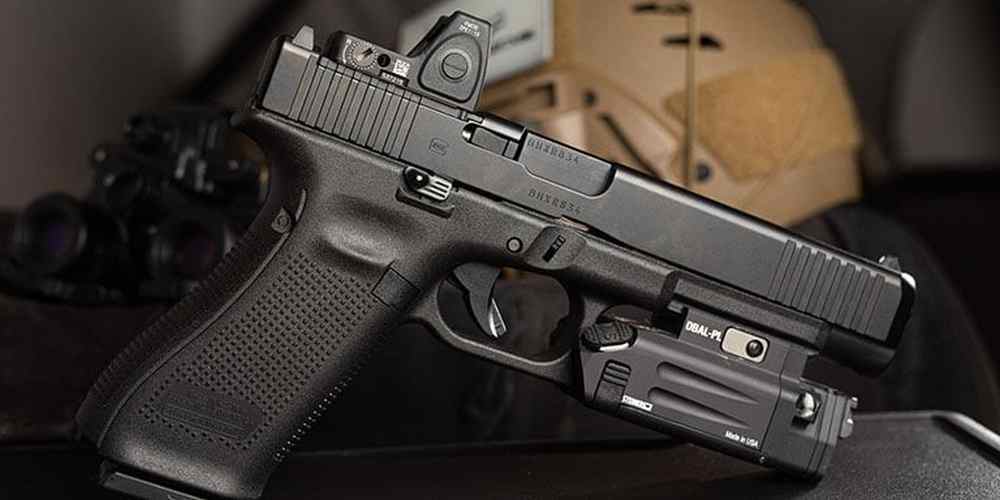“Keep your barrels flowing freely with our obstruction-clearing and prevention services.”
Common Causes of Barrel Obstructions
Barrel obstructions can be a common issue for gun owners, whether they are using a rifle, shotgun, or handgun. These blockages can occur for a variety of reasons, and it is important to know how to clear and prevent them to ensure the safety and functionality of your firearm. One of the most common causes of barrel obstructions is the buildup of residue from firing your gun. This residue can accumulate over time and create a blockage in the barrel, which can affect the accuracy and performance of your firearm. To prevent this from happening, it is important to regularly clean your gun after each use to remove any residue that may have built up. Another common cause of barrel obstructions is the use of improper ammunition. Using ammunition that is not the correct size or type for your firearm can cause blockages in the barrel, which can be dangerous and potentially damaging to your gun. Always make sure to use the correct ammunition for your firearm to prevent this from happening. Additionally, barrel obstructions can occur if foreign objects are accidentally lodged in the barrel. This can happen if you accidentally drop something into the barrel or if debris gets caught while shooting outdoors. To prevent this from happening, always be mindful of your surroundings when handling your firearm and make sure to keep the barrel clear of any foreign objects. If you do encounter a barrel obstruction, it is important to know how to safely clear it to avoid causing damage to your gun. One method of clearing a barrel obstruction is to use a cleaning rod to push the blockage out of the barrel. Make sure to do this carefully and slowly to avoid causing any damage to the barrel or the gun itself. Another method of clearing a barrel obstruction is to use a bore snake, which is a tool specifically designed for removing blockages from gun barrels. Simply insert the bore snake into the barrel and pull it through to remove the obstruction. This method is quick and easy and can be a great tool to have on hand for clearing barrel obstructions. In conclusion, barrel obstructions can be a common issue for gun owners, but with the right knowledge and tools, they can be easily cleared and prevented. By understanding the common causes of barrel obstructions and taking the necessary precautions, you can ensure the safety and functionality of your firearm. Remember to regularly clean your gun, use the correct ammunition, and be mindful of your surroundings to prevent barrel obstructions from occurring. And if you do encounter a blockage, know how to safely clear it to keep your gun in top condition.
How to Safely Clear a Barrel Obstruction
Barrel obstructions can be a common issue for gun owners, but with the right knowledge and tools, they can be safely cleared and prevented. In this article, we will discuss how to safely clear a barrel obstruction and provide tips on preventing blockages in the future. When dealing with a barrel obstruction, it is important to first ensure that the gun is unloaded and the safety is engaged. This will prevent any accidental discharge while working on clearing the blockage. Next, visually inspect the barrel to determine the location and severity of the obstruction. It is crucial to never attempt to fire the gun to clear the blockage, as this can cause serious injury or damage to the firearm. To safely clear a barrel obstruction, you will need a cleaning rod, a bore brush, and some cleaning patches. Start by attaching the bore brush to the cleaning rod and inserting it into the barrel from the chamber end. Gently push the brush through the barrel to dislodge the obstruction. If the obstruction is stubborn, you may need to use a cleaning patch soaked in solvent to help break it up. Once the obstruction has been cleared, run a few dry cleaning patches through the barrel to remove any remaining debris. Finally, inspect the barrel again to ensure that it is clear before reassembling the gun and test firing it in a safe location. To prevent barrel obstructions in the future, it is important to regularly clean and maintain your firearm. This includes cleaning the barrel after each use to remove any fouling or debris that could cause a blockage. Additionally, be mindful of the type of ammunition you are using, as certain types may be more prone to causing obstructions. Another way to prevent barrel obstructions is to avoid shooting in adverse conditions, such as extreme cold or wet weather, which can increase the likelihood of blockages. If you do find yourself in a situation where your gun becomes obstructed, follow the steps outlined above to safely clear the blockage. In conclusion, barrel obstructions can be a frustrating issue for gun owners, but with the right knowledge and tools, they can be safely cleared and prevented. By following the steps outlined in this article and taking proactive measures to maintain your firearm, you can reduce the risk of experiencing a barrel obstruction in the future. Remember to always prioritize safety when working on clearing a barrel obstruction and never hesitate to seek professional help if you are unsure of how to proceed.
Preventing Barrel Obstructions: Best Practices
Barrel obstructions can be a common issue for gun owners, whether they are using rifles, shotguns, or handguns. These blockages can occur for a variety of reasons, such as debris getting lodged in the barrel or a bullet becoming stuck. Clearing barrel obstructions is essential for maintaining the safety and functionality of your firearm. In this article, we will discuss the best practices for preventing barrel obstructions and how to effectively clear them when they do occur. One of the most important steps in preventing barrel obstructions is proper maintenance of your firearm. Regular cleaning and inspection of the barrel can help to identify any potential issues before they become a problem. Make sure to use the appropriate cleaning tools and solvents to remove any buildup or residue that could lead to a blockage. Another key factor in preventing barrel obstructions is using the correct ammunition for your firearm. Using the wrong caliber or type of bullet can cause a blockage in the barrel, leading to potential safety hazards. Always double-check that you are using the right ammunition for your gun before loading it. Proper storage of your firearm is also crucial in preventing barrel obstructions. Keep your gun in a secure location where it is protected from dust, dirt, and other debris that could potentially clog the barrel. Store your ammunition separately from your firearm to prevent any mix-ups that could lead to blockages. In the event that you do encounter a barrel obstruction, it is important to know how to safely and effectively clear it. The first step is to ensure that the gun is unloaded and the safety is engaged. Never attempt to clear a barrel obstruction with a loaded firearm, as this can lead to accidental discharge and serious injury. Once the gun is safely unloaded, you can begin the process of clearing the obstruction. Start by visually inspecting the barrel to identify the location and cause of the blockage. Use a cleaning rod or bore snake to carefully push the obstruction out of the barrel. Avoid using excessive force, as this can damage the barrel or cause the obstruction to become more firmly lodged. If the obstruction is particularly stubborn, you may need to use a cleaning solvent or lubricant to help loosen it. Be sure to follow the manufacturer’s instructions for any cleaning products you use, and always thoroughly clean the barrel after clearing the obstruction to prevent any residue from causing future blockages. After successfully clearing the barrel obstruction, take the time to inspect the barrel for any signs of damage or wear. If you notice any issues, it may be necessary to have the gun professionally inspected and repaired to ensure its continued safety and functionality. By following these best practices for preventing and clearing barrel obstructions, you can help to ensure the safety and reliability of your firearm. Regular maintenance, proper ammunition selection, and safe storage practices are key to avoiding blockages in the barrel. In the event that a blockage does occur, knowing how to safely clear it can prevent accidents and keep your gun in top condition. Remember to always prioritize safety when handling firearms and seek professional assistance if you are unsure of how to properly clear a barrel obstruction.
The Importance of Regular Maintenance to Prevent Blockages
Barrel obstructions can be a common issue for those who use barrels for storage or transportation. Whether you are storing liquids, grains, or other materials, blockages can occur and cause a variety of problems. It is important to regularly maintain your barrels to prevent blockages from happening in the first place. One of the main causes of barrel obstructions is the buildup of residue or debris inside the barrel. This can happen over time as materials are stored and moved around. If left unchecked, this buildup can lead to blockages that can be difficult to clear. Regularly inspecting and cleaning your barrels can help prevent this from happening. When it comes to clearing barrel obstructions, there are a few methods that can be used depending on the type of blockage. One common method is to use a barrel brush to physically remove the obstruction. This can be effective for smaller blockages that are easily accessible. For larger blockages or those that are harder to reach, a pressure washer or steam cleaner may be necessary to dislodge the obstruction. Another method for clearing barrel obstructions is to use a chemical cleaner. There are a variety of cleaning solutions available that can help break down residue and debris inside the barrel. These cleaners can be effective for stubborn blockages that are difficult to remove with physical methods alone. In addition to clearing barrel obstructions, it is important to take steps to prevent blockages from occurring in the first place. Regularly inspecting your barrels for signs of buildup or blockages can help you catch potential issues early on. By addressing these issues promptly, you can prevent them from becoming larger problems down the line. Proper storage and handling of materials can also help prevent barrel obstructions. Make sure that materials are stored in a clean and dry environment to prevent the buildup of residue. Avoid storing materials that are prone to clumping or sticking together, as this can increase the likelihood of blockages occurring. Regularly rotating materials in your barrels can also help prevent blockages. By periodically emptying and refilling your barrels, you can help prevent materials from settling and forming blockages. This can also help ensure that your materials remain fresh and free from contamination. In conclusion, barrel obstructions can be a common issue for those who use barrels for storage or transportation. By regularly maintaining your barrels and taking steps to prevent blockages, you can help ensure that your materials remain free from blockages and contamination. Clearing barrel obstructions can be done using a variety of methods, including physical cleaning, chemical cleaners, and pressure washing. By staying proactive and addressing potential issues early on, you can help keep your barrels in good working condition and prevent blockages from causing problems in the future.
Case Studies: Real-Life Examples of Barrel Obstructions and Solutions
Barrel obstructions can be a common issue for those who work with barrels, whether in the wine industry, oil industry, or any other field that utilizes barrels for storage or transportation. These blockages can be frustrating and time-consuming to deal with, but with the right knowledge and tools, they can be cleared and prevented effectively. One real-life example of a barrel obstruction occurred at a winery in California. The winery had been experiencing slow flow rates from their barrels, which was affecting their production schedule. Upon inspection, it was discovered that sediment had built up at the bottom of the barrels, causing a blockage in the spigot. This sediment was a result of not properly cleaning out the barrels after each use. To clear the obstruction, the winery used a barrel cleaning tool that was specifically designed to reach the bottom of the barrel and remove any built-up sediment. After cleaning out the barrels thoroughly, the flow rates returned to normal, and the winery was able to resume their production schedule without any further issues. Preventing barrel obstructions like this can be done by implementing a regular cleaning schedule for the barrels. This includes rinsing out the barrels with hot water after each use and allowing them to dry completely before storing them. Additionally, using a barrel cleaning tool on a regular basis can help prevent sediment buildup and keep the barrels in optimal condition. Another real-life example of a barrel obstruction occurred at an oil refinery in Texas. The refinery had been experiencing blockages in their barrels due to a buildup of hardened oil residue. This residue was causing the barrels to become clogged, resulting in delays in their production process. To clear the obstruction, the refinery used a high-pressure cleaning system that was able to break up the hardened residue and flush it out of the barrels. After cleaning out the barrels thoroughly, the blockages were cleared, and the refinery was able to resume their production process without any further issues. Preventing barrel obstructions like this can be done by implementing a regular maintenance schedule for the barrels. This includes inspecting the barrels for any signs of residue buildup and cleaning them out as needed. Using a high-pressure cleaning system on a regular basis can help prevent blockages and keep the barrels in optimal condition. In conclusion, barrel obstructions can be a common issue for those who work with barrels, but with the right knowledge and tools, they can be cleared and prevented effectively. By implementing a regular cleaning and maintenance schedule for the barrels, blockages can be avoided, and production processes can run smoothly. Remember to always be proactive in preventing barrel obstructions to ensure a seamless workflow.






